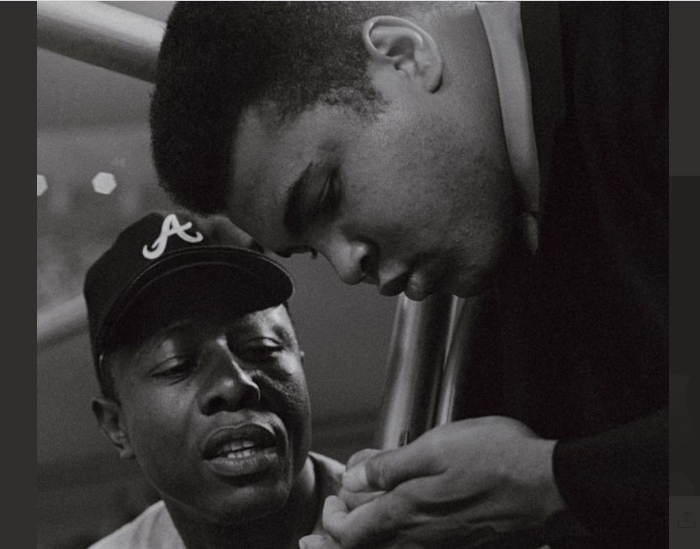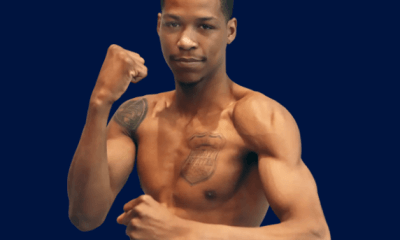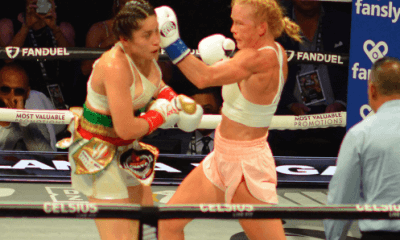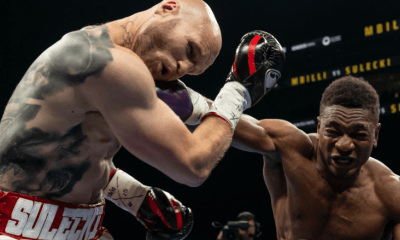Featured Articles
Hank Aaron and Muhammad Ali

Hank Aaron, one of the greatest players in baseball history, died today (January 22) at age 86.
Aaron is best known for breaking Babe Ruth’s mark of 714 career home runs. He finished his sojourn through baseball with 755 homers, a record that stood until 2007 when it was eclipsed by Barry Bonds. He still holds the MLB career records for most RBIs, most total bases, and most extra base hits while ranking third on the list for most hits and most games played and fourth in runs scored. He was a thoughtful gracious man who inspired a generation.
Decades ago, I was conducting research for the book that would become Muhammad Ali: His Life and Times. As part of this process, I interviewed many great athletes. Some, like Jim Brown, had played an important role in Ali’s life. Others had interacted with Muhammad in a less significant manner. The people I spoke with included sports legends like Bill Russell, Kareem Abdul-Jabbar, Wilt Chamberlain, Ted Williams, Mickey Mantle, and Reggie Jackson. On September 5, 1989, I was privileged to talk with Aaron.
Aaron had broken Babe Ruth’s record in 1974, the year that Ali dethroned George Foreman to reclaim the heavyweight championship of the world. The thoughts that Aaron shared with me – one great athlete talking about another – follow:
“I was born in Mobile, Alabama, in 1934. I came up with the Braves when I was twenty. And coming from Mobile, I was very shy. I wasn’t satisfied with the way things were, but I felt like I had to do something special in baseball in order to get people to listen to me. By the time Ali came along, things were a little different but not that much. My first awareness of him was when he won the gold medal. And I saw greatness stamped all over him. How great, I didn’t know. But I was impressed by his ability and his confidence.
“Being a gifted athlete, being one of the best in the world at what you do, is a great feeling. But sometimes it’s kind of eerie because you wonder why you’re blessed with so much ability. I’d go up to the plate to face a pitcher and I’d know that, before the night was over, I was going to hit one out of the ballpark. I felt that, and I’m sure Ali felt the same way. That no matter who he got in the ring with, he was better and he’d figure them out. He had all kinds of confidence. And I was the same way. The only thing that scared me was, when I was approaching Babe Ruth’s record, I got a lot of threatening letters. I’m sure Ali went through the same thing with letters from people who didn’t want him to be heavyweight champion. Most of that stuff is nothing but cranks. But one of them might be for real, and you never know which one.
“I don’t think there’ll ever be another fighter like Muhammad Ali. I’m not putting anybody else down. Maybe someone could have beaten Ali in his prime, but I’m not concerned about that. There’s just no one who could possibly be as beautiful in the ring as he was. For a guy to be that big and move the way he did; it was like music, poetry, no question about it. And for what he did outside the ring, Ali will always be remembered. When you start talking about sports, when you start talking about history; you can’t do it unless you mention Ali. Children in this country should be taught forever how he stood by his convictions and lived his life. He’s someone that black people, white people, people all across the country whatever their color, can be proud of. I know, I’m glad I had the opportunity to live in his time and bear witness to what he accomplished. God gave Ali the gift, and Ali used it right.”
I remember very clearly reading to Ali what Hank Aaron had said about him. And Muhammad responded, “Hank Aaron said that about me? I’m honored.”
Thomas Hauser’s email address is thomashauserwriter@gmail.com. His most recent book – Staredown: Another Year Inside Boxing – was published by the University of Arkansas Press. In 2004, the Boxing Writers Association of America honored Hauser with the Nat Fleischer Award for career excellence in boxing journalism. In 2019, Hauser was selected for induction into the International Boxing Hall of Fame.
Check out more boxing news on video at the Boxing Channel
To comment on this story in the Fight Forum CLICK HERE
-

 Featured Articles3 weeks ago
Featured Articles3 weeks agoAvila Perspective, Chap. 330: Matchroom in New York plus the Latest on Canelo-Crawford
-

 Featured Articles2 weeks ago
Featured Articles2 weeks agoVito Mielnicki Jr Whitewashes Kamil Gardzielik Before the Home Folks in Newark
-

 Featured Articles4 weeks ago
Featured Articles4 weeks agoAvila Perspective, Chap 329: Pacquiao is Back, Fabio in England and More
-

 Featured Articles3 weeks ago
Featured Articles3 weeks agoOpetaia and Nakatani Crush Overmatched Foes, Capping Off a Wild Boxing Weekend
-

 Featured Articles2 weeks ago
Featured Articles2 weeks agoCatching Up with Clay Moyle Who Talks About His Massive Collection of Boxing Books
-

 Featured Articles4 weeks ago
Featured Articles4 weeks agoFabio Wardley Comes from Behind to KO Justis Huni
-

 Featured Articles1 week ago
Featured Articles1 week agoMore Medals for Hawaii’s Patricio Family at the USA Boxing Summer Festival
-

 Featured Articles4 weeks ago
Featured Articles4 weeks agoDelving into ‘Hoopla’ with Notes on Books by George Plimpton and Joyce Carol Oates





















